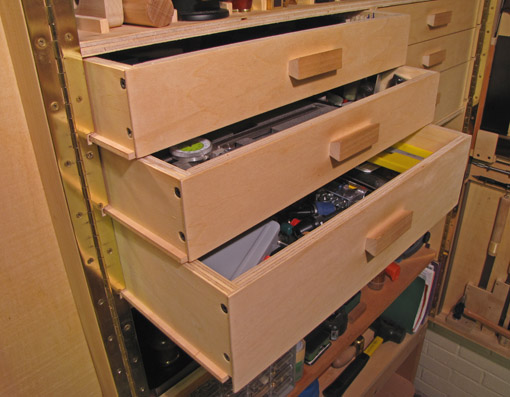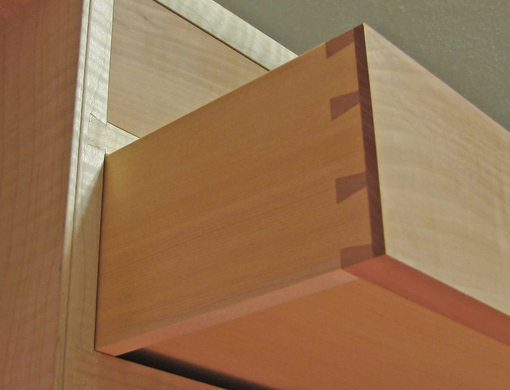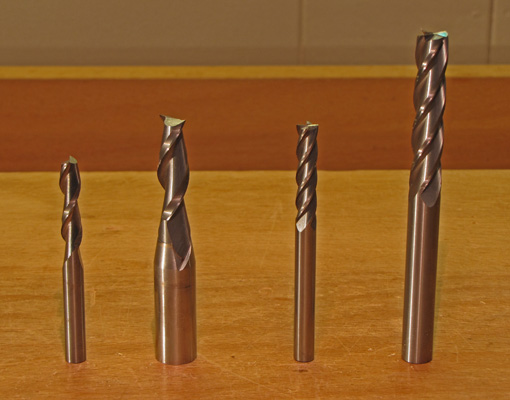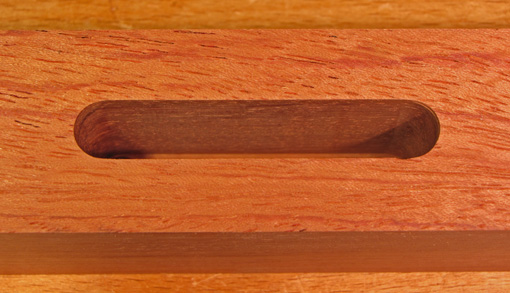There are so many ways to make drawers that a book would be the right medium for a comprehensive discussion of the topic. This introduction begins a series of posts, not likely to be contiguous, which will focus on one method for high quality, fairly small size drawers suited for a craftsman’s best projects.
Sometimes I wonder why we woodworkers bother with the niceties of fine drawers. I still warmly remember the hectic weeks with a newborn baby in a new house when I stole any minutes I could to build a large tool cabinet for my new shop. Six drawers, nothing too pretty: rabbeted plywood, bottoms running side-hung in dadoes, glue, screws, and feeling tired but happy. Now more than two decades, college expenses, and a lot of woodworking later, they still run smoothly. It would be nice if everything worked this well.

Nonetheless, at the other end of the aesthetic spectrum it is certainly possible to combine function with beauty. A logical process, with special attention paid to the critical junctures, will produce enduring, exquisite drawers. This series is based on traditional methods, but I will feature some modifications that I use because they make sense.
This is not the only way to make fancy drawers, nor do I propose it as the “best” way because that judgement depends on function and aesthetics which are ultimately the provinces of each craftsman for each project. For making high-end drawers, as with almost all of my woodworking, I employ machines and hand tools, though the latter predominate and certainly are used for the precision steps.
The next post in the series will address the fine points of case construction with regard to drawer fitting.




